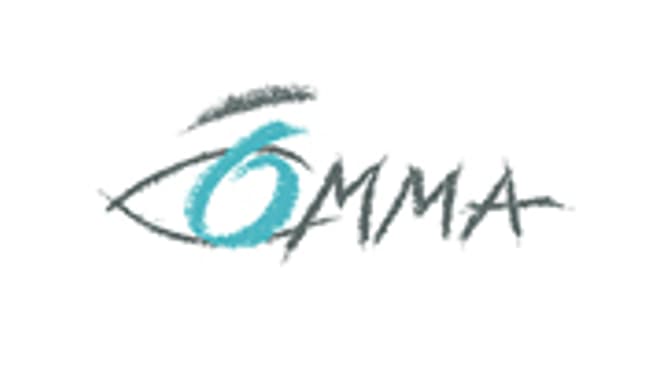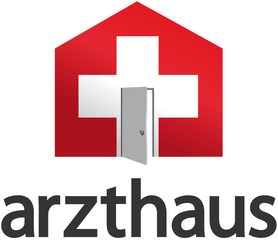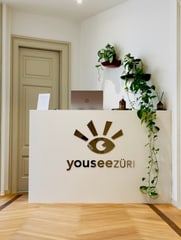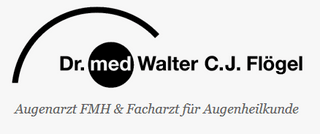Please use Microsoft Edge, Google Chrome or [Firefox](https://getfirefox. com/).
Do you own or work for OMMA?
About Us
The OMMA practice is a community of ophthalmologists in Zurich (near Opera House/Station Stadelhofen). Up-to-date ophthalmology in all insurance classes is our commitment. An individual and long-term care by our motivated team the goal.
Team
- Prof. Dr. med. Wolfgang Bernauer
- Julia Lacoste, MD
- Kyriaki Mazaraki, MD
- Administrative Management
- Practice Assistant
- Orthoptist
- Optometry
General
Welcome to the ÓMMA community of practice!
We welcome you to our new premises in the center of Zurich. Harmony of color and form give our modern practice a setting in which you - and the ÓMMA team - will feel at home.
The head of the group practice, Prof. Dr. med. W. Bernauer, and his dedicated team guarantee optimal, absolutely reliable medical and attentive personal care. At ÓMMA, proven, experienced specialists work with the most modern equipment. We are pleased that our practice enjoys an excellent reputation far beyond Zurich, and we are constantly striving to justify and increase the trust placed in us.
The ÓMMA practice group deals with vision problems of all kinds and also undertakes traffic medical examinations.
The latest technologies allow for a wide range of diagnostic examinations. A small operating room and modern laser equipment are available for the treatment of diseased eyes.
We have extensive experience in the surgical field and in the treatment of inflammatory eye diseases.
Our surgical spectrum includes Cataract surgery (Cataract surgery) correction of refractive errors (refractive surgery) Glaucoma surgery (Glaucoma surgery) Plastic and cosmetic surgery Eyelid surgery Corneal transplants Certain retinal and vitreous surgeries. Strabismus surgery Procedures on the lacrimal ducts
Many of these procedures can be performed on an outpatient basis in the office. Major operations involving opening the eye are performed at the Klinik Im Park (Hirslandengruppe) and at the Kantonales Kreisspital in Männedorf. Certified surgical departments are available at these hospitals. This guarantees a safe procedure of your operation and optimal care after the operation.
**Cataract
By Prof. Dr. med. W. Bernauer
Cataract surgery is by far the most common surgical procedure in ophthalmology. We also perform this operation more frequently than any other eye surgery.
What is a cataract? How is cataract treated? When should cataract surgery be performed? What happens during cataract surgery? What are the chances of success with cataract surgery?
What is a cataract?
A cataract is the clouding of the originally clear lens of the eye (Figure 1). The lens is an essential part of the eye's imaging system (Figure 2). Normally, it is clear and transparent. If clouding occurs - which is the case after injury or inflammation, but preferably in old age - visual acuity decreases: The result is a cloudy image of the environment. In addition, there is an increased sensitivity to glare, because the light falling into the eye is scattered by the lens opacity and thus irritates regions of the eye that are more sensitive to light. In the case of so-called senile cataract, the lens of the eye usually becomes cloudy very slowly, which means that those affected are often unaware of the deterioration in vision.
How is cataract treated?
The expectations placed in "eye drops against cataract" could not be met by any of the drugs. When the initial slight clouding of the lens thickens, surgery is the only treatment option. It almost always leads to success - with extremely low stress for the patient, especially since the procedure is usually painless.
**When should cataract surgery be performed?
The timing of the operation depends on the visual requirements. If the patient feels up to the daily visual tasks, there is no rush. For drivers, however, other standards apply than the subjective feeling: "I actually still see quite well". Older drivers in particular should therefore have their eyesight checked regularly by an ophthalmologist to determine whether their vision is adequate for driving a vehicle. A mere eye test is not sufficiently informative in this context: the eyes themselves and also the glare sensitivity should be examined.
What happens during cataract surgery?
During cataract surgery, the clouded lens is removed and a plastic lens is implanted. The lens of the eye lies just behind the pupil and consists of several parts (Figure 2). In the center lies a nucleus that hardens with age and around it lies the softer cortex. The entire lens is enclosed by the lens capsule, which is suspended by elastic fibers - the zonula fibers - from the ray body of the eye behind the iris. In cataract surgery today, the entire cloudy lens is no longer removed from the eye, but the lens capsule is left in the eye if possible. In today's most common form of cataract surgery, phacoemulsification, the lens capsule is opened in a disc-shaped manner at the front through a very small incision, the harder lens nucleus is liquefied with ultrasound and then aspirated together with the softer lens cortex (Figure 3).
A small plastic lens (Fig. 4) is then implanted into the remaining lens capsule to compensate for the optical defect caused by the lens removal.
Thanks to the development of very small and, in some cases, foldable intraocular lenses, the corneal incision required for the procedure can be kept so small that it closes itself and suturing is no longer necessary. Shortly after the operation, the patient regains full visual acuity, provided that no other eye diseases are present.
**What are the chances of success with cataract surgery?
With today's procedures, the complication rate of cataract surgery is very low. More than 90% of all patients see much better after the procedure. However, unfortunately, this good result cannot be expected if a patient is affected by another eye disease in addition to cataract. The age-related disease of the retina center (macular degeneration), diabetic retinal disease, advanced glaucoma, or a circulatory disorder of the optic nerve are such limiting diseases. As a result of higher life expectancy, such multiple diseases are increasing. Therefore, only after a thorough examination by the ophthalmologist it can be predicted what improvements the surgery can bring.
**Glaucoma
By Prof. Dr. med. W. Bernauer
Glaucoma is a disease characterized by a temporary or permanent increase in intraocular pressure, resulting in impaired blood flow to the optic nerve. Without treatment, the optic nerve is damaged, leading to a loss of vision and visual field defects, and even blindness.
What is glaucoma? Can you recognize glaucoma yourself? How is glaucoma diagnosed? How common is glaucoma, who is affected? What is the structure of the eye and how is glaucoma related to it? How is glaucoma treated? Can glaucoma be operated?
What is a glaucoma?
Glaucoma is a disease characterized by a temporary or permanent increase in intraocular pressure, resulting in impaired blood flow to the optic nerve. Without treatment, the optic nerve is damaged, leading to a decrease in vision and visual field loss, and even blindness. The goal of any glaucoma treatment is to preserve the function of the optic nerve, which transmits visual impressions from the eye to the brain. In the brain, the information is converted into an image; i.e. into what we "see".
Elevated intraocular pressure is considered the first stage of glaucoma disease. Without treatment, blindness is imminent.
Can you recognize glaucoma by yourself?
Normally this is not possible. In the vast majority of cases, glaucoma is completely painless. It leads only in the advanced stage to a deterioration of vision recognizable for the affected person. Therefore, it is left to the examination of the ophthalmologist to diagnose glaucoma.
In case of sudden severe eye pain, you should immediately consult an ophthalmologist, it could be the very rare angle-closure glaucoma (glaucoma attack), which must be treated immediately by a specialist. On weekends and outside consulting hours you should contact the ophthalmological emergency service!
How is glaucoma diagnosed?
We have several methods available to diagnose glaucoma. The most important examinations that we can perform are described below.
The measurement of intraocular pressure.
Here we have two frequently used methods at our disposal: Either the pressure is measured with a fine air jet or with a so-called tonometer. The tonometer is a small measuring device that is gently pressed onto the eye by the ophthalmologist. Both methods are absolutely painless. - The pressure measurement gives us a value for the intraocular pressure. The evaluation of these results is not very easy and should be left to the ophthalmologist. An increased pressure does not mean a disease in every case and some patients have glaucoma even with normal pressure values.
The measurement of the visual field with the eye not moving.
The visual field is the area you can perceive visually. In glaucoma disease, this area becomes increasingly limited. (Fig. 1 to 3). This gradual process is usually not registered by the affected person. We can determine the shape and size of the visual field using a measuring device known as a perimeter. This requires the patient to respond to a variety of light signals. This examination takes between 5 and 30 minutes. - The measurement of the visual field gives us accurate information about the status of the glaucoma disease. Repeated visual field measurements taken at longer intervals can be used to monitor the progression of the disease. In the best case, the visual field is unchanged.
Examination of the optic nerve.
The optic nerve carries sensory input from the eye to the brain, exiting the back of the eye. This place is called the optic disc or the optic nerve head. It can be examined by us with the so-called ophthalmoscope or a magnifying glass. Often the pupil is dilated with eye drops for this purpose. Please note that this temporarily leads to a deterioration of vision, so that you are not allowed to drive yourself for a few hours. - Examination of the back of the eye shows us whether optic nerve damage due to glaucoma or another disease is already apparent. Occasionally, damage is evident here even before a change in the visual field. Therefore, the evaluation of the optic nerve is a very important part of the ophthalmologic examination.
How common is glaucoma, who is affected?
Glaucoma affects two out of every hundred people over the age of forty. With increasing age, the disease becomes more frequent.
It is known that the predisposition to glaucoma is hereditary. If one of your blood relatives is affected, you should definitely have your intraocular pressure checked regularly by an ophthalmologist (at least once a year). Severe nearsightedness increases the frequency and severity of glaucoma. Glaucoma is also more common in people suffering from diabetes and vascular diseases.
Any form of nicotine consumption poses an additional risk in the case of impending or established glaucoma, because nicotine constricts blood vessels and therefore worsens blood flow in important areas of the eye.
Certain medications also affect intraocular pressure. For example, patients who have to take cortisone preparations over a longer period of time because of rheumatism or allergies are somewhat more likely to develop glaucoma.
Last but not least, glaucoma can also be the result of another disease or even an eye injury.
What is the structure of the eye and how is glaucoma related to it?.
The eye conveys about 40% of all our sensory impressions. Its structure is somewhat similar to that of a photo camera: The front boundary of the eye is the transparent cornea, behind which the colored iris can be seen. Behind this lies the lens of the eye. It is surrounded by the aqueous humor, a colorless fluid that is constantly produced and passes through the pupil into the anterior chamber of the eye between the iris and the cornea. From there, it is normally drained from the eye.
This fluid is responsible for intraocular pressure. If the drainage of the aqueous humor is disturbed, there is a harmful increase in intraocular pressure. Via the vitreous humor, the increased intraocular pressure is transmitted to the back of the eye, the retina and the optic nerve. As a result, the valuable optic nerve cells in this area can be damaged and a gradual loss of visual field occurs, which in many cases is not noticed by the affected person.
How is glaucoma treated?
In most cases eye drops are sufficient. The most important thing is regular use according to our instructions. Laser therapy or surgery may also be useful at a later stage.
The goal of treatment is to effectively lower intraocular pressure and thus protect against damage to the optic nerve and visual field.
Regular use of the prescribed medication is of great importance. Please take these drops as prescribed by your doctor. If you need to instill more than one medication, please wait a few minutes between applications. This will allow all the drops to take effect. For eye drops to work optimally, please proceed as follows:
Get in the habit of always applying your drops at the same time. It may be easier if you always do the drops in conjunction with another regular activity, such as before breakfast and after dinner.
To apply the drops, pull down your lower eyelid slightly, tilt your head back a bit and put the drops into the lower eyelid. Now please try not to pinch, so that the active ingredient is not pressed out of the eye, but keep the eyes closed best for 2-3 minutes.
After dropping, please keep the nasolacrimal duct closed for one to two minutes so that the medication can take effect better.
Can glaucoma be operated?
Surgery must be considered if treatment with eye drops and tablets cannot achieve sufficient pressure reduction. It is suggested especially when there is a deterioration of the visual field and the results of the examination of the optic nerve.
The most frequently performed glaucoma surgery is trabeculectomy. In addition, related procedures are also performed in which the eye is not completely opened.
Using a sketch or model, the ophthalmologist will explain how the conjunctiva is opened, how the drainage path through the sclera is established, and how the wound is closed.
Usually, this surgery significantly lowers the eye pressure, which should not cause further damage to the optic nerve. Drug therapy can usually be reduced or stopped altogether.
Laser instead of glasses
From Dr. K. Øyo
The correction of ametropia by means of glasses and/or contact lenses is considered unsatisfactory by many people. Nowadays, refractive laser surgery and lens surgery are offered as modern alternatives.
What does the laser do? What laser does OMMA use? What are the advantages of the C-Ten laser over traditional laser methods? Am I a candidate for laser treatment? Who will operate on me?
What does the laser do?
During laser treatment, the surface of the cornea is selectively ablated in places, creating a new surface with altered refractive power. This changes the correction of the eye and the patient no longer needs a visual aid. An exception to this is presbyopia; at around 45-50 years of age, it becomes necessary to wear reading glasses. This change of the eye happens in the lens and cannot be influenced by the laser.
Which laser does OMMA use?
In cooperation with the Eye Clinic of the Cantonal Hospital of Lucerne, the OMMA practice team offers you the currently most modern and safest laser correction of the eyes.
The C-Ten laser convinces with an individually adapted, short and precise treatment.
C = Customized (=individual and tailor-made):
The treatment is individually adapted to the shape of the cornea and its surface. Before the operation, each eye is measured with two devices specially designed for laser treatment.
TEN = Trans-Epithelial Non-contact-ablation (= non-contact ablation):
This new generation of lasers is the only one that allows the surgeon to perform the operation without additional fixation (non-contact)! This prevents additional tissue damage. The extremely fast laser ablates the epithelium (the regenerable surface) within a few seconds, thus ensuring an extremely smooth and regular surface.
- Advantages of the C-Ten laser compared to alternative laser methods:The treatment time is very short, 20 to 50 seconds per eye.
- Only as much epithelium (regenerable surface) is removed as necessary, which significantly sho
This text has been machine translated.
Languages
Location and contact
OMMA
-
office address
Theaterstrasse 2 8001 Zürich
-
Phone
0442... Show number 044 256 80 10 *
- Visit site Visit site
- * No listing required
reviews
Do you wish to rate "OMMA"?

There are no reviews for this company yet.
Have you any experience of this company?

* These texts have been automatically translated.
Other listers

OMMA












